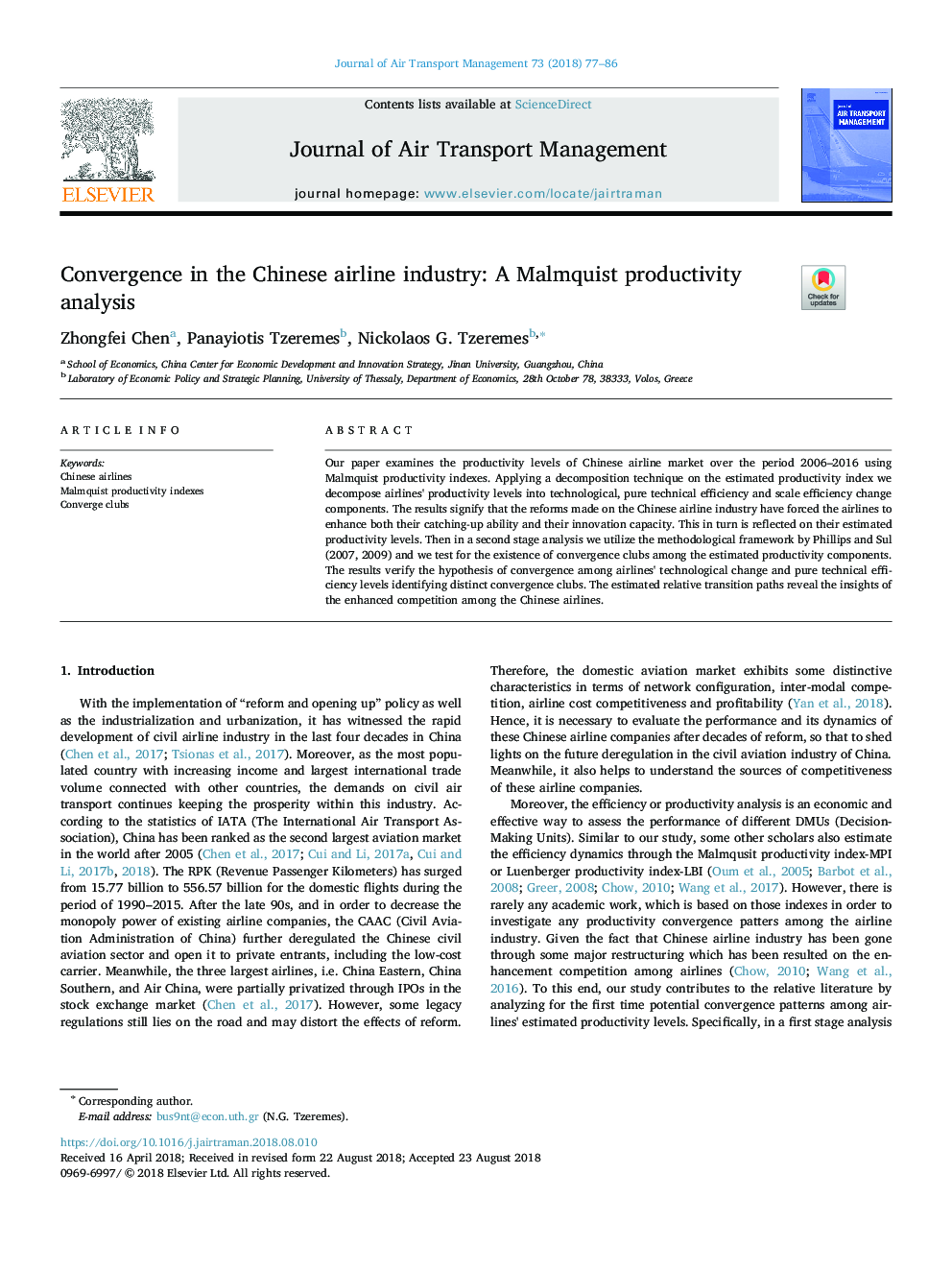| Article ID | Journal | Published Year | Pages | File Type |
|---|---|---|---|---|
| 10127809 | Journal of Air Transport Management | 2018 | 10 Pages |
Abstract
Our paper examines the productivity levels of Chinese airline market over the period 2006-2016 using Malmquist productivity indexes. Applying a decomposition technique on the estimated productivity index we decompose airlines' productivity levels into technological, pure technical efficiency and scale efficiency change components. The results signify that the reforms made on the Chinese airline industry have forced the airlines to enhance both their catching-up ability and their innovation capacity. This in turn is reflected on their estimated productivity levels. Then in a second stage analysis we utilize the methodological framework by Phillips and Sul (2007, 2009) and we test for the existence of convergence clubs among the estimated productivity components. The results verify the hypothesis of convergence among airlines' technological change and pure technical efficiency levels identifying distinct convergence clubs. The estimated relative transition paths reveal the insights of the enhanced competition among the Chinese airlines.
Keywords
Related Topics
Social Sciences and Humanities
Business, Management and Accounting
Strategy and Management
Authors
Zhongfei Chen, Panayiotis Tzeremes, Nickolaos G. Tzeremes,
